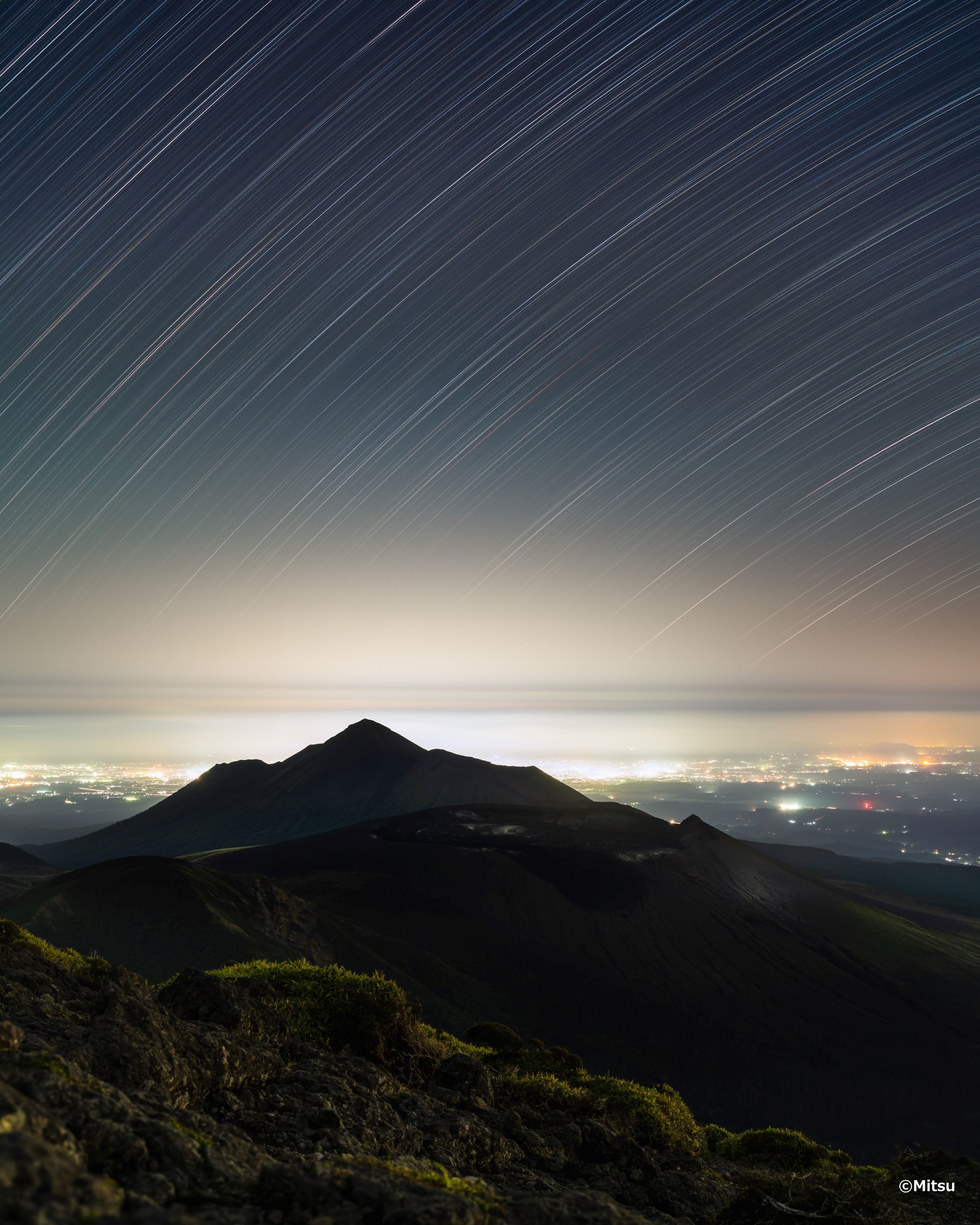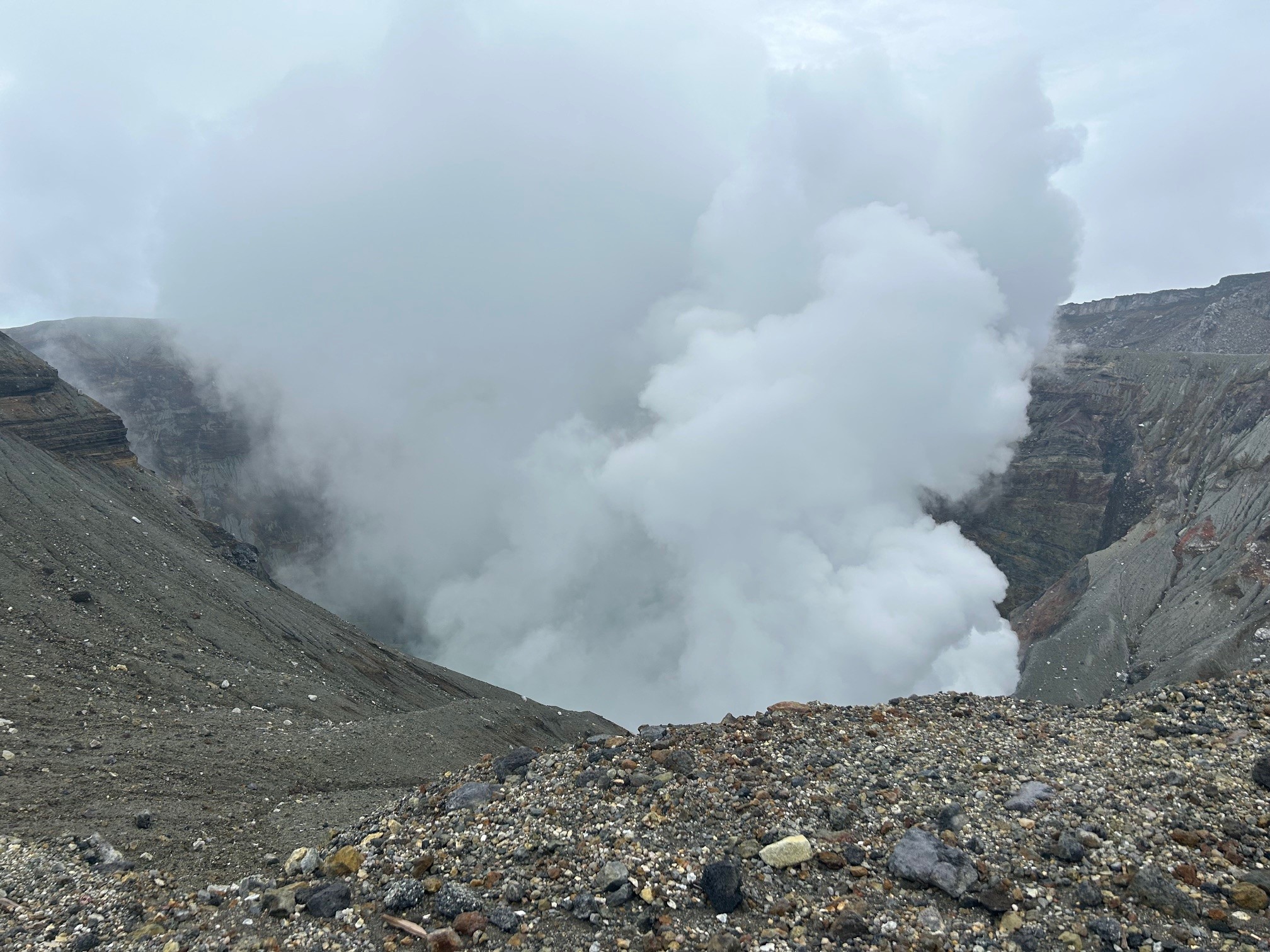Tourism EXPO Japan 2025 Aichi/Central Japan

Aso-Kuju National Park / Kirishima-Kinkowan National Park
Aso-Kuju National Park
Scent of Grasslands, Breathing of Volcanoes, Wind that frolic across the Majestic Landscape
The main characteristics of the park include a huge caldera encompassing the five peaks of Mount Aso, along with the Kuju Mountain Range located to the north, and magnificent and gentle grasslands surrounding them. In the southern part of the park, visitors can admire a series of breathtaking scenery. Mount Aso has one of the world's largest calderas, measuring approximately 25 kilometers from north to south and 18 kilometers from east to west.
The central volcanic cone group, known as Aso Gogaku or the five peaks of Mount Aso, includes Mount Takadake as its highest point, reaching a height of 1,592 meters.
Activities: electronic mountain biking, horseback riding, trail walking in grassland, hot air ballon, paragliding, helicopter tour and trekking around Aso mountain and Kuju range.
Designation: December 4, 1934
Area:73,017 hectares
kirishima-kinkowan National Park
Kirishima Massif, Kinkowan Bay, Sakurajima Volcano
Hot Springs Created by Giant Calderas and Bountiful Seas
Born in 1934 as Kirishima National Park, Kirishima-Kinkowan National Park was one of Japan's first national parks. The park can be broadly divided into northern and southern parts, each with its own characteristic scenery as either the Kirishima area or Kinkowan Bay area.
The Kirishima area in the northern part of the park has a series of more than 20 volcanoes, both large and small, as well as crater lakes, fumarole phenomena, hot springs, and plateaus all created through volcanic activity, in addition to a large amount of natural vegetation. Many tourists and others visit the main usage bases for the Kirishima area, including the Ebino Highland, Kirishima Onsen hot springs resort, Takachihogawara, and Kirshima-jingu Shrine. In the Kinkowan Bay area in the southern part of the park, centered around Mt. Sakurajima --a still-active volcano that is the area's symbol--is unique scenery, including Mt. Kaimon, Lake Ikeda, and Chiringashima Island on the Satsuma Peninsular side; Cape Sata-misaki --home of many subtropical plants--on the Osumi Peninsular side; and the sea area within the bay.
Scent of Grasslands, Breathing of Volcanoes, Wind that frolic across the Majestic Landscape
The main characteristics of the park include a huge caldera encompassing the five peaks of Mount Aso, along with the Kuju Mountain Range located to the north, and magnificent and gentle grasslands surrounding them. In the southern part of the park, visitors can admire a series of breathtaking scenery. Mount Aso has one of the world's largest calderas, measuring approximately 25 kilometers from north to south and 18 kilometers from east to west.
The central volcanic cone group, known as Aso Gogaku or the five peaks of Mount Aso, includes Mount Takadake as its highest point, reaching a height of 1,592 meters.
Activities: electronic mountain biking, horseback riding, trail walking in grassland, hot air ballon, paragliding, helicopter tour and trekking around Aso mountain and Kuju range.
Designation: December 4, 1934
Area:73,017 hectares
kirishima-kinkowan National Park
Kirishima Massif, Kinkowan Bay, Sakurajima Volcano
Hot Springs Created by Giant Calderas and Bountiful Seas
Born in 1934 as Kirishima National Park, Kirishima-Kinkowan National Park was one of Japan's first national parks. The park can be broadly divided into northern and southern parts, each with its own characteristic scenery as either the Kirishima area or Kinkowan Bay area.
The Kirishima area in the northern part of the park has a series of more than 20 volcanoes, both large and small, as well as crater lakes, fumarole phenomena, hot springs, and plateaus all created through volcanic activity, in addition to a large amount of natural vegetation. Many tourists and others visit the main usage bases for the Kirishima area, including the Ebino Highland, Kirishima Onsen hot springs resort, Takachihogawara, and Kirshima-jingu Shrine. In the Kinkowan Bay area in the southern part of the park, centered around Mt. Sakurajima --a still-active volcano that is the area's symbol--is unique scenery, including Mt. Kaimon, Lake Ikeda, and Chiringashima Island on the Satsuma Peninsular side; Cape Sata-misaki --home of many subtropical plants--on the Osumi Peninsular side; and the sea area within the bay.
Co-exhibitor of National Parks of Japan, Ministry of Environment.
Sanriku-Fukko National Park/Towada-Hachimantai National Park :
Amamigunto National Park :
Ashizuri-Uwakai National Park :
Aso-Kuju National Park :
Aso-Kuju National Park / Kirishima-Kinkowan National Park :
Chubusangaku National Park :
Chubusangaku National Park / Fuji-Hakone-Izu National Park :
Eco Tourism Promotion Council :
Eco Tourism Promotion Council<Kamiichi town, Toyama/Gero city, Gifu/Toba city, Mie> :
Ise-Shima National Park :
Kerama Islands National Park/Amami Islands National Park :
Keramashoto National Park :
Kirishima-Kinkowan National Park :
National Park ( Nikko National Park / Oze National Park ) :
National Park (Yambaru National Park) / (Yakushima Park) :
National Park(Daisen-Oki National park)/(San'inkaigan National Park) :
National Park(Joshin'etsukogen/Myoko-Togakushi renzan) :
National Parks (Ise-Shima National Park/Yoshino-Kumano National Park) :
National Parks of Japan (Setonaikai National Park / Ashizuri-Uwakai National Park) :
Setonaikai National Park :
Towada-Hachimantai National Park :
Yakushima (Island) National Park :
Yambaru National Park :
Yoshinokumano National Park :
| Booth No | E-035 |
|---|---|
| Area | Japan |
| Official site | https://www.japan.travel/national-parks/parks/ |
| SNS Links |
Photos




